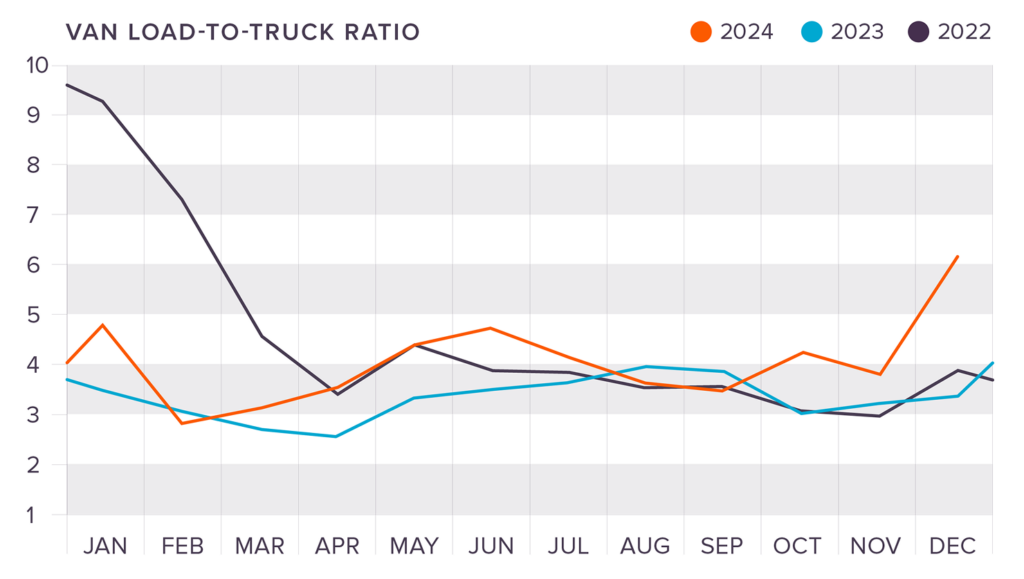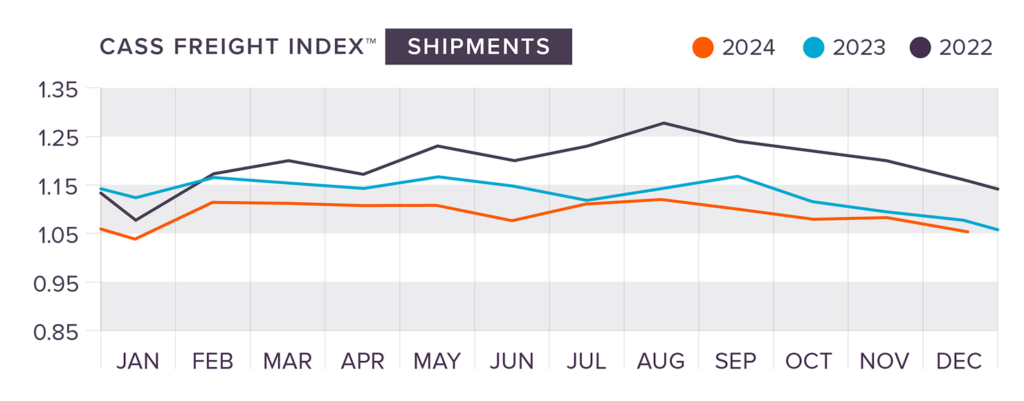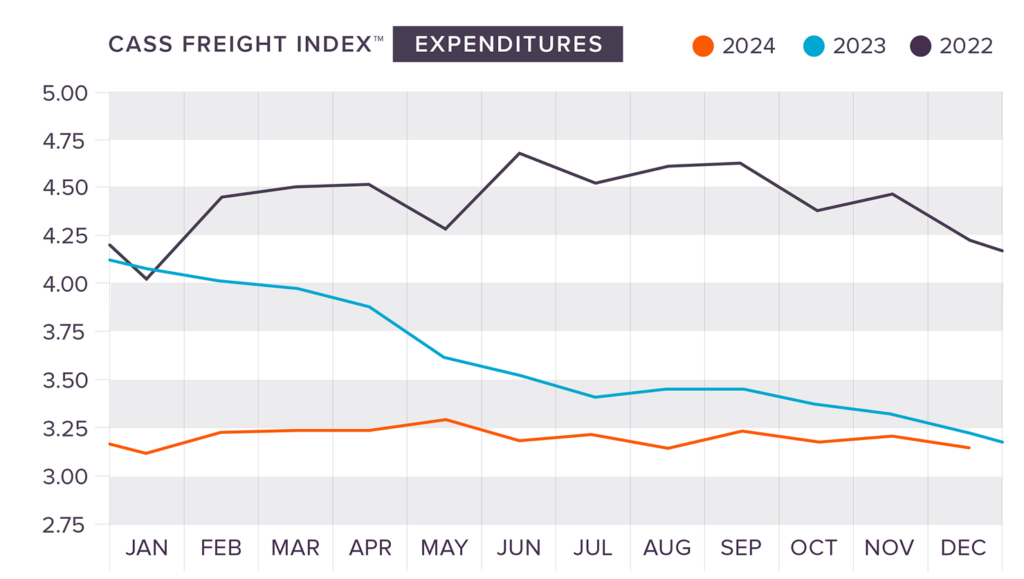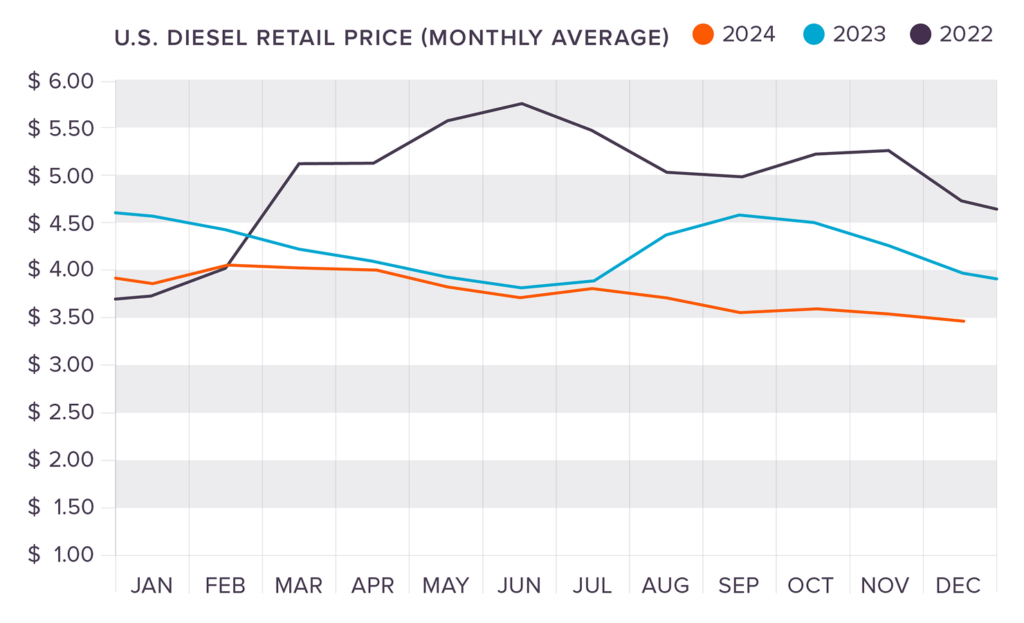
As we step into 2025, businesses are navigating a mixed economic landscape. The freight market is experiencing seasonal slowdowns, but increased capacity and stable diesel prices offer a silver lining for shippers. While freight volumes remain unpredictable, the overall trend points toward gradual recovery. Now is the time for logistics professionals and manufacturers to reassess strategies and capitalize on opportunities for a more resilient supply chain.
Expected Economic Growth is Stable
The latest U.S. Economic Forecast anticipates a slowdown in economic growth for 2025, with GDP projected to increase by 2.0%, down from 2.5% in 2024. This deceleration is attributed to tightening monetary policy, reduced consumer spending, and ongoing supply chain disruptions. Inflation is expected to moderate to 3.2% in 2025, easing from 4.1% in 2024, as supply chain issues gradually resolve, and demand pressures lessen. The labor market is forecasted to remain tight, with the unemployment rate edging up slightly to 4.0% in 2025 from 3.8% in 2024, reflecting slower job growth amid economic cooling.
Consumer Confidence Soars as Manufacturing Output Plummets
The best news coming out of the economy lies in the opinion of the people, whose consumer optimism reached its highest level since before the COVID-19 pandemic. This joins positive economic indicators like low unemployment rates, steady job growth, and rising wages.
The latest (December) Jobs Report showed a sturdy labor market with little changes in employment in the key supply chain sectors (transportation, retail, and manufacturing). In total, 256,000 jobs were added in December, largely in health care, government, and social assistance.
Manufacturing output continued to struggle throughout the end of the year, falling to a 15-month low (since July 2023) in October. The manufacturing sector has been in contraction for seven months, despite goods spending increasing at its fastest pace in 1-1/2 years in the third quarter. The Manufacturing PMI® rebounded in November and December, increasing by 0.2% and 0.9%, respectively, to end the year at 49.3 percent.
Capacity Opened up in Q4

The DAT Van Load-to-Truck Ratio surged at the end of December, nearly doubling from 3.84 in November to 6.14 in December. While this reflects a seasonal capacity shift, the freight market remained soft, as spot and contract rates saw only minor fluctuations. This suggests that, despite higher load-to-truck ratios, demand did not strengthen significantly.
National Spot and Contract Rates at the end of December were:
- Van: $2.11 (Spot) and $2.41 (Contract)
- Flatbed: $2.39 (Spot) and $3.04 (Contract)
- Reefer: $2.48 (Spot) and $2.74 (Contract)
Freight Expenditures and Shipments Tumble in Q4


Freight shipments and expenditures dropped significantly in Q4, with more than half of the decline attributed to normal seasonal patterns. However, persistent softness in shipments suggests broader market challenges.
- Cass Freight Index® Shipments: -1.9% (Oct), +0.5% (Nov), -7.3% (Dec)
- Cass Freight Index® Expenditures: -1.5% (Oct), +0.9% (Nov), -2.6% (Dec)
Tonnage Continued to be Slow and Choppy
2024 was a roller coaster year for tonnage, with the ATA’s advanced seasonally adjusted For-Hire Truck Tonnage Index bounding up and down from month to month. As gains were made one month, losses would follow the next. The good news is that, despite slow progress, the index has trended in the right direction. At the end of 2024, tonnage is up a total of 1.1%, and that’s after hitting a low in January.
For Q4, freight rose by 1.2% in October, capping off several months of improvements in freight towards the end of the year. While the gains were welcomed, they were short lived, as freight contracted in November by 1.9%, wiping more than half the increases made in the last three months. Because of the boom-and-bust nature of the index, it’s hard to predict the number in Q1, but we can at least say that the trends are heading in the right direction, albeit slowly.
Diesel Fuel Prices Waver in Q4

Diesel fuel prices fluctuated slightly in Q4 but remained stable, with week-to-week changes never exceeding $0.10 per gallon. Prices began a gradual climb just before Christmas, but no major volatility is expected in the coming months. As of this report, diesel fuel sits at $3.602 per gallon.
Kick Your Business into High Gear This Year
It’s already 2025, but that’s not too late to take a look at your supply chain plan this year. Change begins with a simple call, and we’re ready to help you find the solutions that are right for your business. Get in touch with our logistics experts for a free consultation today!







 Joel Rice
Joel Rice